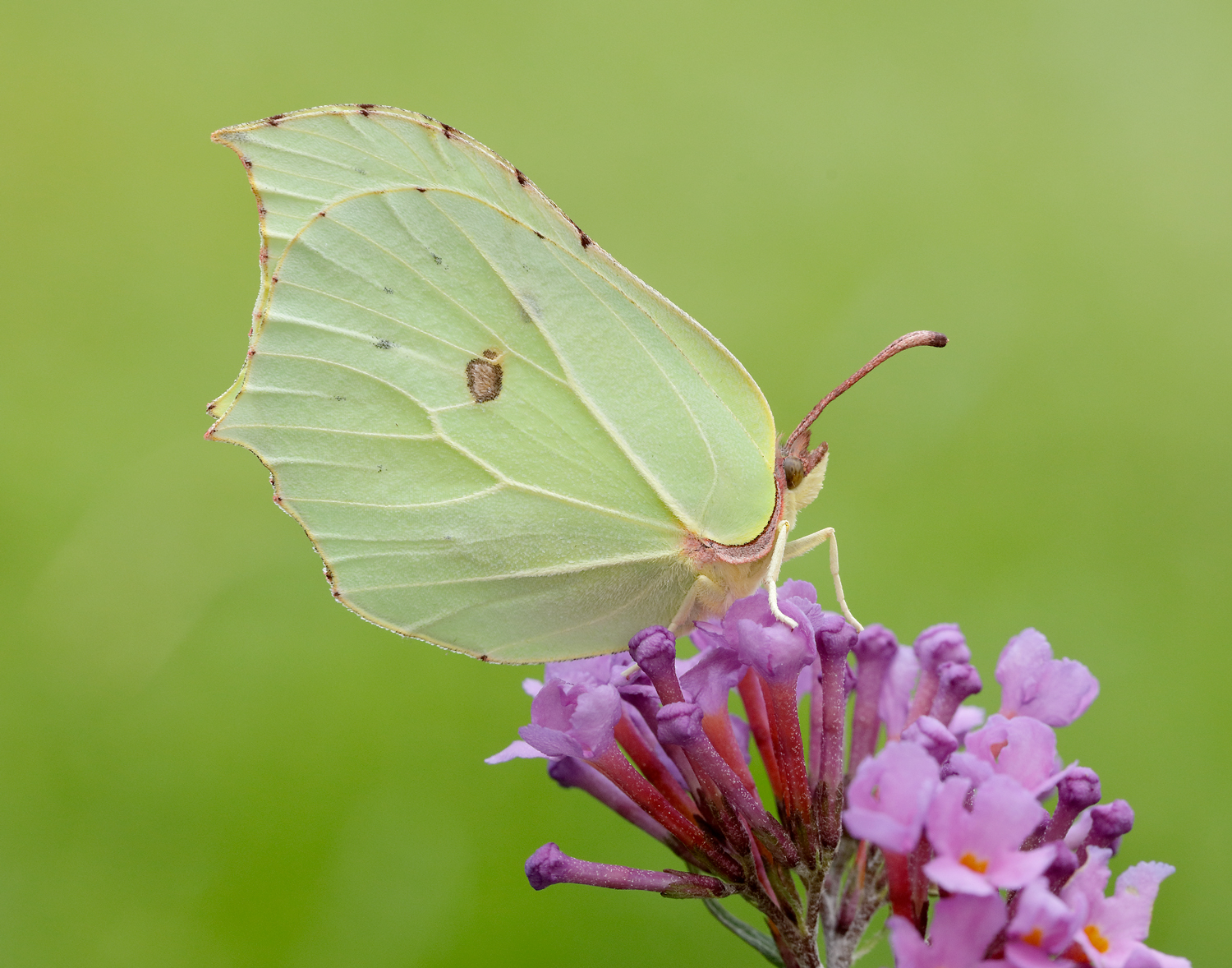The recent icy blast that has enveloped much of the UK certainly adds to the impression that we are still firmly in the grip of winter, but as February gets into its stride, the signs of the fast approaching spring are becoming more and more evident.
The days are noticeably lengthening and the sombre silence of the mid-winter countryside is being broken with the increasingly strident twitterings of the dawn chorus.
Already in some places, the first Snowdrops, Daffodils and Primroses are providing a dash of colour and sustenance to early pollinators such as bumblebees groggily emerging from hibernation.
But one of the quintessential signs that spring has truly sprung is that first brief encounter of the season with the flashing yellow brilliance of a Brimstone.
A springtime treat
And rather than that first Brimstone sighting being an unexpected treat, there are a few simple steps you can take in your garden to help make sure you see springtime Brimstones on a far more regular basis.
Buckthorn is the sole foodplant for Brimstone caterpillars, so if you can provide a few Buckthorn bushes or a hedge, you’ve got a good chance of attracting adult Brimstones which famously travel miles seeking out the bushes upon which to lay their eggs.
And luckily, February, when the weather is still generally damp and roots are still dormant, is a great month to plant Buckthorn in your garden. There are two types; Common Buckthorn and Alder Buckthorn and both will attract Brimstones.
If you have room a hedge will provide maximum benefit for Brimstones and other wildlife. Buckthorn flowers provide nectar which will attract bees and hoverflies. Later in the year its shiny black berries will provide fuel for birds. Green Hairstreak occasionally lays eggs on Buckthorn as does Holy Blue and several species of moth.
Get digging
Bare rooted Buckthorn whips are cheap, easy to establish and readily available from garden centres. Dig a trench one metre wide and 30 centimetres deep. Add compost and fertiliser then place the hedging plants, with their roots spread out, into the trench, with each plant ideally spaced about 30 centimetres apart. Cut back hard after planting to encourage bushy growth from the base of the hedge. Put bark chippings or mulch around the plants to suppress weeds and retain moisture.
Within in a few years you should have an attractive and well established hedge and Brimstone magnet in your back garden.
If you are lucky enough to live in Suffolk, Butterfly Conservation’s Suffolk Branch have been organising a long-running scheme to increase Brimstones in the region through the mass planting of Buckthorn. If you contact the Branch they can supply you with free Buckthorn whips and planting advice.
For more details and to get involved, please contact @email
By Liam Creedon
Butterfly Magazine Editor
Follow Liam on Twitter @liamcreedon


